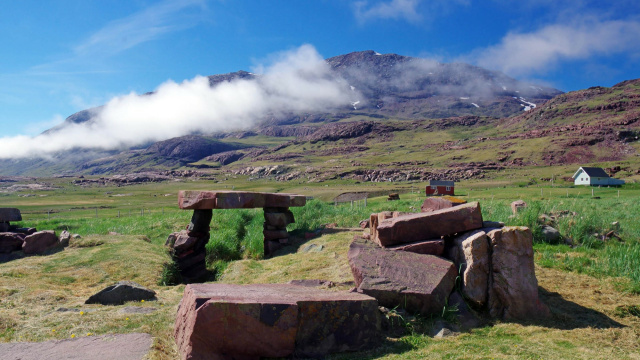Igaliku
xxx

Gardar Nordboruiner
From late in the 10th to the first parts of the 15th century, large parts of South and West Greenland were inhabited by Norse Vikings.
In Igaliku, you can see the remains of the Norse Gardar Diocese, a large complex consisting of the church, the bishop’s farm and stables, warehouses, and a forge.
While the Thule Inuit had not yet reached the south of Greenland, Brattahlid (modern-day Qassiarsuk) and Gardar (today's Igaliku) would come to dominate life in South Greenland after the arrival of the Norse in 982.
The Norse constructed the Viking-style homes developed in their homeland of Iceland. Stables, human habitation, and livestock shelter were all located in one large building. One benefit of doing it this way was that the animals' heat would help heat the entire structure. Some of these farms had considerable sizes. For instance, you can still see the remnants of a stable that was 70 meters (230 feet) long at Igaliku. There would be a large number of animals housed in this stable, including 65 cows, sheep, horses, and pigs. The Norse also created irrigation systems for the nearby fields to ensure enough animal food. These fields are still in use today.
Photos by Reinhard Pantke - Visit Greenland








